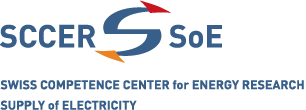Computational energy innovation (Task 3.2)
This task will serve as a transversal structure, providing state-of-the art knowledge for innovative computational tools in geo-energy and hydropower. As binding element within the SCCER-SoE, task 3.2 will focus on discretization and solution methods for coupled systems of partial differential equations. Particular emphasis will be put on efficient and massively parallel approaches and their implementation in modern software libraries.
